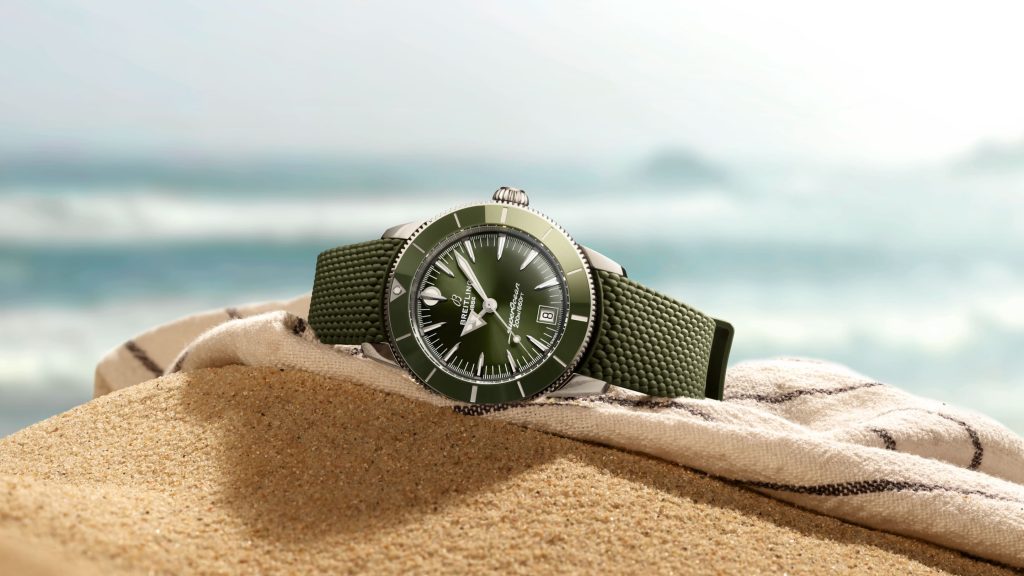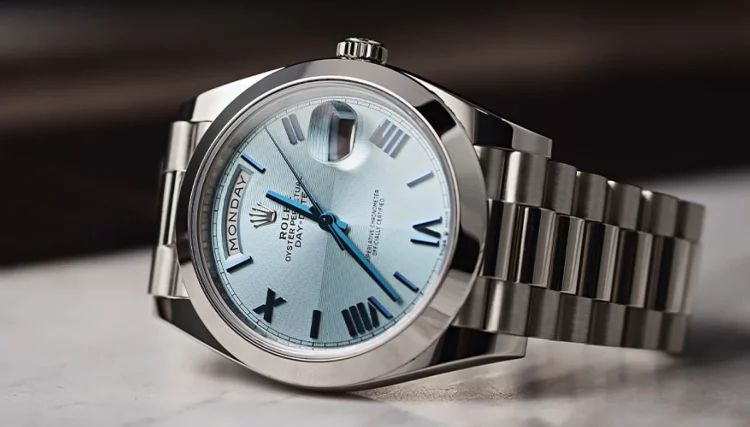In the world of high-end horology, watch enthusiasts spend tens of thousands of dollars on precision, craftsmanship, and mechanical excellence. Yet, lurking in nearly every kitchen, office, or even children’s toy collection is a silent assassin that can bring that mechanical perfection to its knees—a humble $3 fridge magnet. While most luxury watch owners worry about scratches, theft, or power reserve issues, few consider magnetism as a real-world threat. But 2025’s latest testing data reveals that even brief exposure to common household magnets can dramatically disrupt a watch’s accuracy, rendering tourbillons useless and COSC certifications irrelevant—at least temporarily.
The problem lies not in extreme magnetic environments like MRI machines or electric power stations, but in overlooked everyday exposures: a handbag clasp, wireless earbuds cases, induction cooktops, or yes, that souvenir fridge magnet from Prague. Despite brand claims of anti-magnetic technology, a surprising number of mechanical movements—especially vintage or modified ones—are still shockingly vulnerable. It’s time for collectors to reevaluate how they store, wear, and travel with their watches, before a $3 item compromises a $50,000 investment.
Real-World Testing of Anti-Magnetic Claims
Many watch manufacturers today tout their latest movements as “anti-magnetic.” Brands like Omega, Rolex, and IWC have made significant advancements using silicon hairsprings, non-ferrous alloys, and movement shielding. But what does “anti-magnetic” actually mean in practice?
To understand the difference between marketing and reality, a series of independent lab tests in Switzerland were conducted in early 2025, using 12 watches from various price segments and manufacturers, exposed to household-level magnetic fields. The results were sobering.
- A Rolex Milgauss (rated for 1,000 gauss) and Omega Seamaster Aqua Terra Master Chronometer (rated for 15,000 gauss) performed as expected under refrigerator magnets and Bluetooth speaker fields—retaining perfect accuracy.
- However, a Patek Philippe Calatrava with a traditional Swiss lever escapement showed a 10-second daily deviation after being placed near a MacBook charger for 3 minutes.
- A vintage Audemars Piguet Royal Oak was exposed to a children’s magnetic construction toy for under 10 seconds. The result: 35 seconds per day loss, confirmed by a timegrapher.
- Even a modern Jaeger-LeCoultre Reverso, despite its iconic case flipping design, suffered measurable disruption after a week near a magnetic clasp handbag.
The key takeaway? Anti-magnetic does not mean magnet-proof. Many collectors assume a mechanical watch is resilient to daily life just because it’s modern or expensive. The truth is, unless the movement has been specifically designed with silicon components and tested beyond ISO 764 standards (which only require resistance to 60 gauss), vulnerability remains.
And here’s the kicker: magnetism affects the hairspring, the very heart of timekeeping in a mechanical watch. Once magnetized, the coils may stick together, altering the oscillation and throwing off the balance wheel. The resulting inaccuracies might seem minor at first—10 or 20 seconds—but compounded over time, they not only frustrate the user but lead to servicing expenses and resale value depreciation.
Unexpected Danger Zones in Modern Environments
While most people know to avoid MRI machines and industrial welding sites when wearing mechanical watches, few suspect the everyday danger zones where magnetic fields can lurk. Based on data from 2025’s Watch Accuracy Disturbance Study (WADS), here are some surprising offenders:
- Laptop and Tablet Cases: Many contain magnetic closures, especially folio-style designs. Placing your watch on top of a closed iPad for 15 minutes can magnetize the hairspring on a non-shielded movement.
- Headphone and Earbud Charging Pods: Magnetic clasps and inductive charging coils can create small but potent localized fields.
- Car Doors and Dashboard Speakers: High-end audio systems in luxury vehicles often contain embedded magnets that radiate throughout the cabin.
- Kitchen Appliances: Induction stovetops, fridge magnets, blenders, and even automatic coffee machines emit low-frequency electromagnetic radiation that can affect sensitive movements.
- Handbags and Phone Cases: Magnetic clasps, used widely in designer bags, are frequently the unintentional culprit when a mechanical watch starts running fast.
- Airport Security Trays: The rubber mats on X-ray trays often include embedded magnets to keep them aligned on conveyor belts. Placing your wristwatch directly onto the tray exposes it unnecessarily.
And then there’s the biggest irony: some modern watch winders now come with magnetic locking mechanisms. These high-end storage devices, meant to protect and preserve, may in fact be slowly damaging watches they’re meant to care for.

Proper Storage Solutions for Different Movement Types
Not all mechanical watches are created equal when it comes to magnetic resistance. Understanding your watch’s architecture can help you create a defense plan that doesn’t involve wrapping it in aluminum foil or avoiding tech altogether.
- Silicon-Based Movements
Watches like the Omega Co-Axial Master Chronometer or Rolex 3230-series movements include silicon hairsprings and are practically immune to magnetic fields up to 15,000 gauss. These can be worn around most consumer electronics without issue.
Storage tip: Keep in a watch box away from wireless charging stations and avoid placing directly next to high-powered speakers.
- Traditional Lever Escapement with Soft Iron Shielding
Models like the IWC Ingenieur or older Rolex Milgauss use soft iron inner cases to deflect magnetic fields.
Storage tip: Store upright in a box with a non-magnetic lining (wood or carbon fiber), and do not stack near laptops or phone chargers.
- Vintage Movements (Pre-1990s)
These are highly vulnerable due to steel hairsprings and no protective casing.
Storage tip: Use a demagnetization mat near your watch box, and always demagnetize after travel. Avoid magnetized tools and keep away from speakers, tablets, and car doors.
- Tourbillons and Complication Watches
Despite the price tag, many tourbillons are less resistant to magnetism than simpler time-only watches because their hairsprings are still metallic and unshielded.
Storage tip: Treat like fine jewelry. Keep in a non-magnetic safe with desiccant pouches. Rotate wear between pieces to minimize field exposure.
- Smartwatch-Adjacent Luxury Pieces
Hybrid models like TAG Heuer’s Connected series or Louis Vuitton Tambour Horizon are unaffected by magnetism but ironically may be a source of it.
Storage tip: Never charge a smartwatch next to your mechanical timepieces.
Collectors who own multiple mechanical watches should consider investing in a portable magnetometer. These pocket-sized devices measure ambient magnetic fields and can help diagnose unexpected accuracy shifts. Additionally, demagnetizers—once found only in watchmaker benches—are now available in consumer-friendly versions for under $100.
The Final Verdict: Vigilance Over Value
A $3 fridge magnet is no match for a $50,000 watch in terms of price—but in terms of physics, it absolutely can win the fight. Watchmaking is an art and a science, and while brands continue to innovate with materials like silicon and even spider silk, the truth remains that magnetism is an invisible enemy still underestimated by most collectors.
Preventing magnetization isn’t about paranoia—it’s about awareness. As our environments become increasingly tech-saturated and our homes more automated, the risk is no longer exotic. It’s mundane. And that’s what makes it dangerous.
Whether you’re a collector of Patek Philippes or a first-time buyer of a vintage Omega, knowing where your watch sleeps and what it sleeps next to could be the difference between chronometric perfection and a frustrating trip to the service center. Because in horology, as in life, it’s often the smallest things—unseen, unnoticed, underestimated—that can cause the most lasting damage.





































